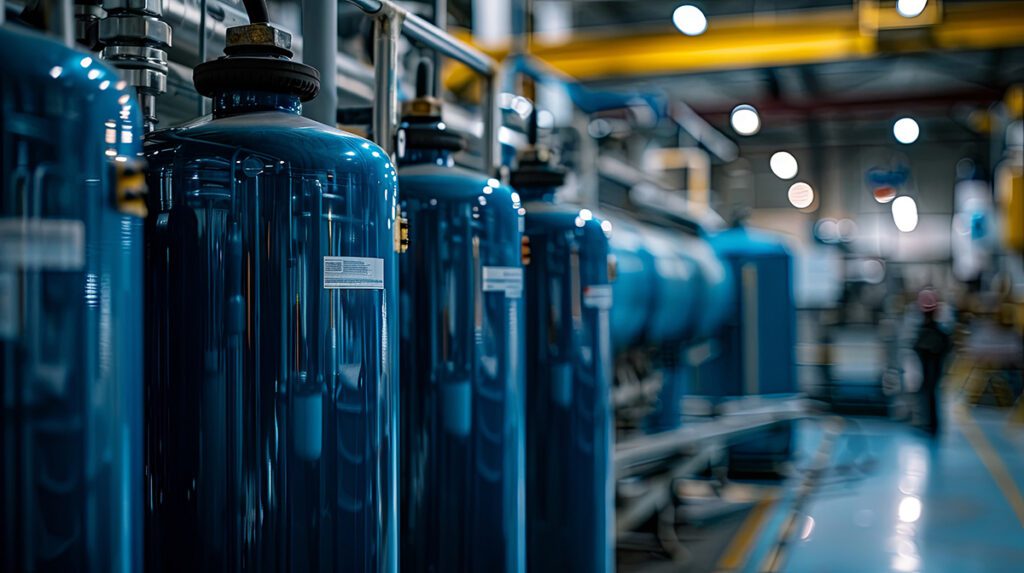
Improve Your Health this New Year with Clean Water
Looking for a New Year’s resolution? Why wait? You can start improving your personal and household health with clean water solutions. The Benefits of Soft Water Learn What’s in Your

Share This Post
It can be frustrating when your RO system is on the fritz, like when the reverse osmosis tank isn’t filling up. Not only does that prevent your water from being filtered, it can potentially damage the system, becoming a costly problem. Even if the tank is working fine right now, it’s important to understand how to correct issues before they happen.
If your RO tank isn’t filling, let’s take a look at potential reasons why and how to correct them.
| Possible Issue | RO Part Affected | Action to Confirm |
|---|---|---|
| #1 Low Household Water Pressure | None | Check household water pressure (see below) |
| #2 Low RO Tank Pressure | RO Tank Air Valve | Measure tank pressure with a tire gauge to the air valve under a blue cap. It must be 5-7 psi. |
| #3 Broken Tank Bladder | RO Tank Air Bladder | If water leaks out of the air valve, the tank bladder may be compromised. |
| #4 Clogged RO Membrane in Need of Replacing | RO Membrane | Check its next Replacement Date. If possible, compare its feed pressure against its norm. |
| #5 Clogged RO Filters in Need of Replacing | RO Carbon Filters | Check its next Replacement Date. If possible, compare its feed pressure against its norm. |
| #6 Improper Water Feed Connection | Water Feed Lines and Connectors | Check for kinks and hook-up connections. |
| #7 Improper Water Drain Connection | Water Drain Tubes and Connectors | Check for kinks and hook-up connections. |
One of the most common reasons for a tank not filling is the house’s water pressure itself. Ideally, for an RO system to work, the water pressure must be 60 psi, but a range of 40 to 80 is acceptable too. When the pressure is too low, the water can’t push through the RO membranes, preventing the tank from filling. If the pressure is low at all the faucets in the house, it is likely a temporary issue with the local water company, in which case you should give them a call.
If all the faucets in the house are working normally then the pressure in the tank may be the issue. The tank should have a pressure of 7 to 8 psi without any water in it; to confirm or see what the pressure is, locate the valve (typically covered by a blue plastic cap) on the side of the tank near the bottom. After removing all the water from the tank, use a pressure gauge to see what it is. If low, add air with a pump until reaching 7 or 8 psi, and be sure to only add a small amount of air at a time or risk rupturing the air bladder.
If you only get one cup of water from the RO faucet (at normal water pressure) and then it quickly turns to a trickle or small stream, it’s usually a sign the air bladder in the storage tank has ruptured. Unfortunately, the only solution to this is to replace the storage tank itself.
Like other water filtering systems, the components that do the filtering need regular changes. This is a common reason for the tank not filling up, the membranes being clogged, preventing water from passing through them and stopping the tank from filling. These membranes are fragile and can easily become clogged if not switched out regularly, generally every 24 months depending on usage and water quality. To solve this, have a technician come to replace the membranes with new ones.
A reverse osmosis system filters water in two ways, through membranes and cartridges (filters). If the membranes are new or recently replaced, a clogged filter may be the reason the tank isn’t filling. The carbon blocks (filters) should be changed every six months to once a year depending on water quality and usage. If the water tastes like chlorine or different than usual, this may be the reason for the tank not filling and only requiring a new cartridge.
Another reason for the tank not filling is with the water feed connection itself, which can happen in two ways: there is a kink in the water line or it was improperly installed. Look at pictures of the installation that show the proper feed connection to ensure it is hooked up correctly and double-check that the water supply line valve is in the fully open position.
The drain saddle, where the wastewater carries contaminants away, can sometimes cause the reverse osmosis tank to not fill. To see if this is the cause, first check if it is installed correctly by checking the installation pictures. Another related error may be the ASO valve not shutting off, which can be tested by turning the tank valve off to see if the ASO stops flowing to the drain, which can take a few minutes to see.
If the ASO is found to be the culprit, there are a few reasons for this:
As with any machine, errors can occur, and it’s important to know what to look for and to regularly check the RO system. Some of these issues do require professional assistance, especially if troubleshooting hasn’t helped or solved the issue outright.
We at H20 Solutions are dedicated to empowering individuals who want water their way, delivering safeguards to improve the home’s water supply and properly maintaining the filtering system with the right tools. If you have RO system problems, we invite you to connect with our experts and explore our selection of tools to help get your water back to the quality you deserve.
Navigating the maintenance and care of your EcoWater treatment system is vital to ensuring its lasting efficiency and performance. Whether it’s understanding salt maintenance, troubleshooting regeneration issues, or planning system deep cleaning, our team, as an EcoWater Systems distributor, is here to assist you every step of the way. Contact us today.
Published on: 7/16/2024
Last updated on: 7/16/2024
More To Explore

Improve Your Health this New Year with Clean Water
Looking for a New Year’s resolution? Why wait? You can start improving your personal and household health with clean water solutions. The Benefits of Soft Water Learn What’s in Your

How to Have Softer Skin Through the Winter | Soft Water Solutions
As we go further into the holiday season, it is not uncommon for the cold weather to cause dry skin. Did you know that the culprit of dry hair, skin,
Request Your Free Water Analysis Today!